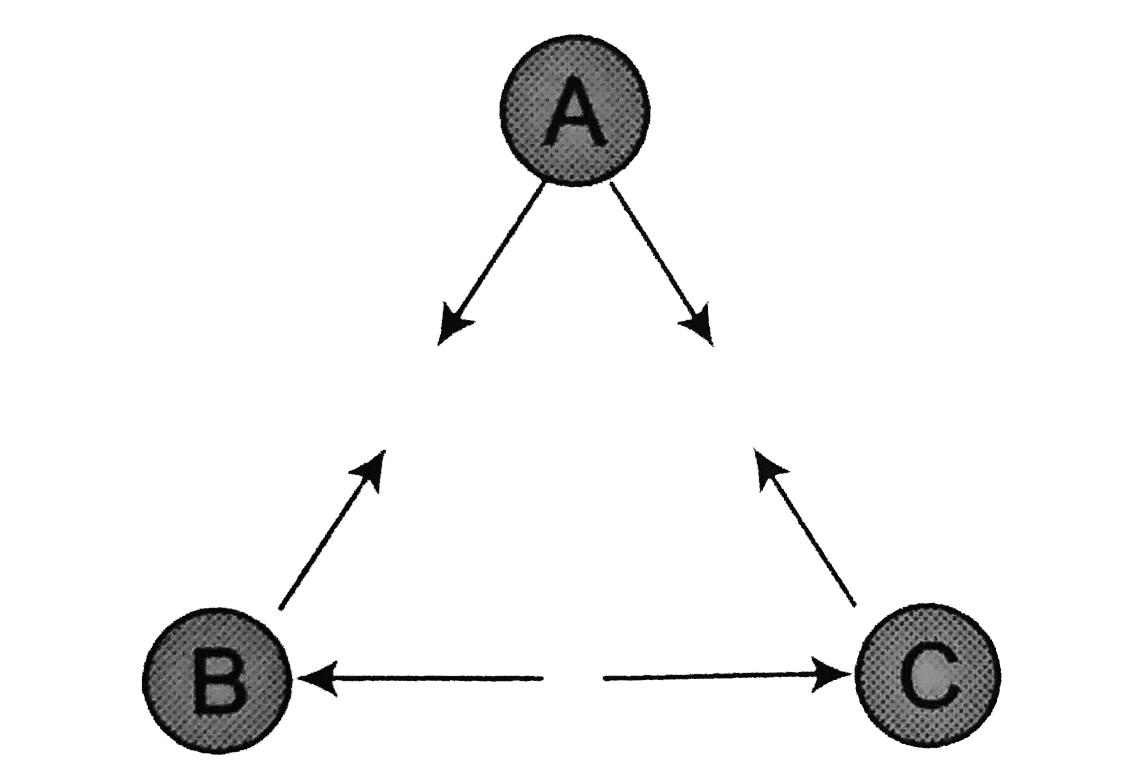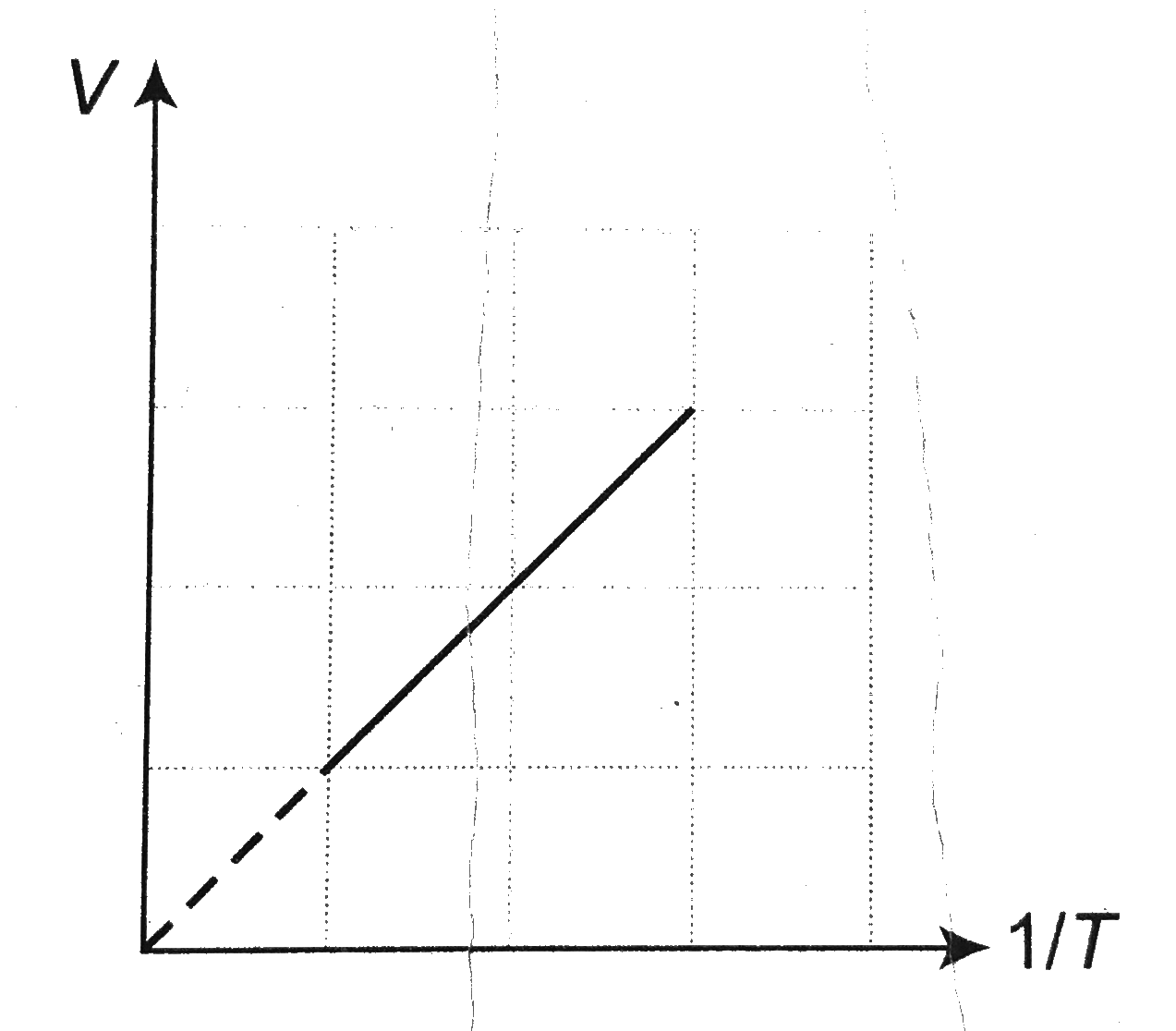One mole of an ideal gas undergoes a process whose molar heat capacity is 4R and in which work done by gas for small change in temperature is given by the relation dW=2RdT, then find the degree of freedom of gasSolution in Gujrati
3
4
5
6
The correct Answer is:B
For small change dQ=dU+dW,nCdT=nCv
dT+2nRdT
∴C=Cv+2R,4R=Cv+2R∴Cv=2R,
Cv=(fR).(2) hence f=4
Topper's Solved these Questions
- BOOK - ALLEN CHAPTER - TEST PAPERSEXERCISE - Part-1 Physics15videos
TEST PAPERS
- BOOK - ALLEN CHAPTER - TEST PAPERSEXERCISE - part-2 physics73videos
TEST PAPERS
- BOOK - ALLEN CHAPTER - TEST PAPERSEXERCISE - PAPER 260videos
TEST PAPERS
- BOOK - ALLEN CHAPTER - TEST PAPER 4EXERCISE - PHYSICS45videos
TEST PAPER 4
- BOOK - ALLEN CHAPTER - UNIT & DIMENSIONS, BASIC MATHS AND VECTOR EXERCISE - Exercise (J-A)7videos
UNIT & DIMENSIONS, BASIC MATHS AND VECTOR
Similar Questions
A quantity of 2 mole of helium gas undergoes a thermodynamic process, in which molar specific heat capacity of the gas depends on absolute temperatureT , according to relation:
C=3RT4T0
where T0 is initial temperature of gas. It is observed that when temperature is increased. volume of gas first decrease then increase. The total work done on the gas until it reaches minimum volume is :-04:53View SolutionA bead is connected with a fixed disc of radius R by an inextensible massless string in a smooth horizontal plane. If the bead is pushed with a velocity v0 prependicular to the string, the bead moves in a curve and consequently collapses on the disc. Then
 04:29View Solution
04:29View SolutionThe diagram shows the arrangement of three small uniformally charged spheres, A,B and C. The arrow indicate the direction of the electrostatic forces acting between the spheres (for example, the left arrow on sphere A indicates the electronstatic force on sphere A due to sphere B). At least two of the spheres are positively charged. Which sphere, if any, could be negatively charged?
 02:40View Solution
02:40View SolutionTwo forces, each of magnitude F have a resultant of the same magnitude F. The angle between the two forces is
02:08View SolutionMatch List I with List II and select the correct answer using the codes given below the lists :
 01:53View Solution
01:53View SolutionAn ideal gas undergoes an isobaric process. If its heat capacity is C, at constant volume and number of mole n, then the ratio of work done by gas to heat given to gas when temperature of gas changes by ΔT is :
View SolutionA gas undergoes a process such that pprop1/T . If the molar heat capacity for this process is C=33.24J//mol-K , find the degree of freedom of the molecules of the gas.
01:52View SolutionOne mole of an ideal monoatomic gas undergoes a process as shown in the figure. Find the molar specific heat of the gas in the process.

R is a gas constant.03:58View SolutionFor an ideal diatomic gas, during any process T=KV, find out the molar heat capacity of the gas during process (neglecting vibrational degree of freedom)
03:38View SolutionAn ideal gas with adiabatic exponent ( gamma=1.5 ) undergoes a process in which work done by the gas is same as increase in internal energy of the gas. Here R is gas constant. The molar heat capacity C of gas for the process is:
View SolutionOne mole of an ideal gas undergoes a process such that P prop (1)/(T) . The molar heat capacity of this process is 4R.
03:04View SolutionOne mole of an ideal gas undergoes a process whose molar heat capacity is 4R and in which work done by gas for small change in temperature is given by the relation dW=2RdT, then the ratio CPCV is
05:45View SolutionIn a thermodynamic process on an ideal diatomic gas, work done by the gas is η times. The heat supplied (η<1). The molar heat capacity of the gas for the process is
02:12View SolutionAn ideal gas undergoes an isobaric process. If its heat capacity is C, at constant volume and number of mole n, then the ratio of work done by gas to heat given to gas when temperature of gas changes by ΔT is :
02:34View SolutionOne mole of an ideal gas undergoes a process such that P∝1√T . The molar heat capacity of this process is 4R, where R is universal gas constant. Then,
01:08View SolutionA gas undergoes a process such that p∝1T. If the molar heat capacity for this process is C=33.24J/mol−K, find the degree of freedom of the molecules of the gas.
03:05View Solution

